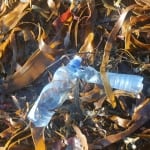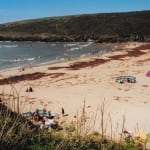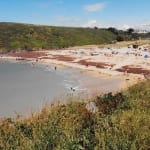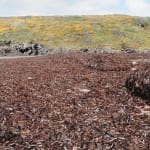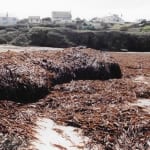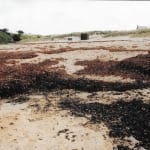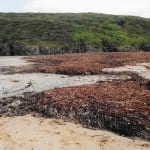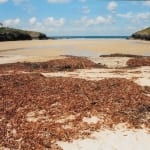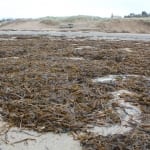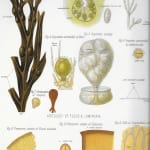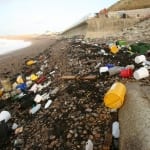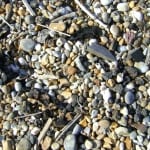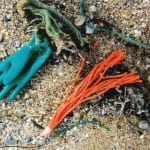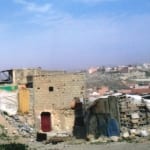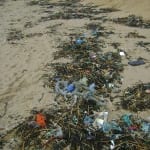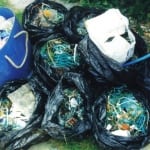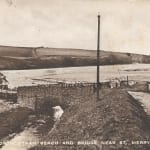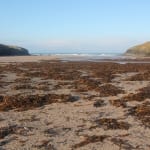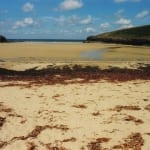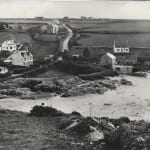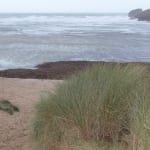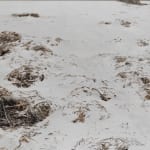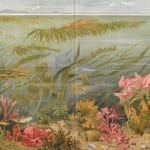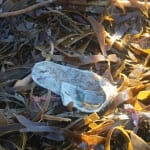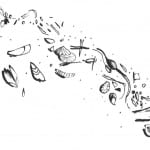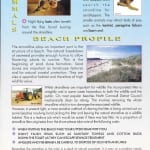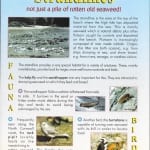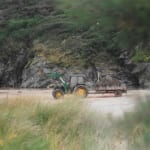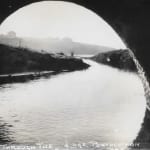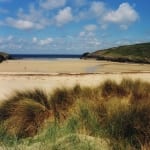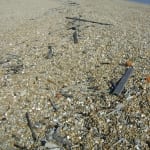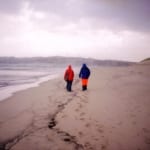THE STRANDLINE
This is where everything collects on a beach. It’s the line left by the last tide. This line moves up and down the beach as the tides change each day.
There are two high tides a day and two low tides a day. Wherever you go wrecking you need to know when it will be high tide because if you aren’t aware of it you can be caught by the sea and swept away. Never take a risk with the sea. Even experienced beachcombers and fishermen get caught out and drown.
I make an instinctive response to the combination of wind and tide and time before I make the decision to leave the house. There will be something in the air. The smell of the sea plays its part. The fact that I live right on the beach allows me to be at one with it. Once I get onto the sand I can detect within the first metre whether the line will be fruitful, I’ve got used to looking at a strandline and I know when it’s going to be HOT, it’s just experience.
The strandline looks different on different surfaces. Sand is best for beachcombing because everything sits on the surface and stands out against the fine grains. Shingle is more demanding on the eye but shingle is freer draining so objects don’t rot down so fast, they can be suspended in shingle banks for years. I have found leather and bone and 50 year old plastic on beaches in Suffolk that would not have held together on a Cornish beach. It is a lot more difficult to find seeds on a shingle beach but not impossible.
Orford Ness in Suffolk is a shingle bank which used to be a military test site. There may be unexploded ordinance on the beach so part of the strandline is out of bounds. I stood on the limit and saw old wood and cork floats I haven’t seen for years together with faded plastic combs and itched to pick it up, though in fact I like the idea that ancient strandlines exist.
I went to New Zealand to see my son Jim and on South Island the beaches are clean of everything except wood. The Island is covered in forest and there aren’t many people so wood builds up into huge piles. It’s the same on the coast or Oregon, North West America. Cornwall hasn’t many trees left, due to mining and boat building, so any wood that washes in is very quickly claimed.
In Morocco I found that beaches were worked. There would be a rough shack made from drift near the beach and anything of interest was long gone before I got there. That is until the rain fell after 10 years of drought and thousands of empty water bottles were washed out of previously dried up river beds into the sea.
What you find is determined by the landmass where you live. The shape of the coastline creates eddies that sift debris- right hand gloves to one beach left hand gloves to another. So you find different things on different beaches and coasts. I know a beach near here which we call haberdashers cove- it doesn’t have another name- it always has cloth, rubber and socks there and not much else. On the Island of Texel, Holland, they find only left handed gloves- they reckon that the right hands go up the North Sea to Yorkshire.
There are always particular places where shells collect.
In great storms which happen from time to time, when the combination of a huge swell and a high tide come together, everything gets pulled out of the rocks and sand and shingle. The sea takes it back and travels with it further up the coast. In the end if debris isn’t removed from the beach it will keep on going. The debris in the Pacific mostly ends up in Alaska, while the end of the line in the Atlantic is Svalbard and the Arctic ice beyond.
In the year 2000 I photographed the beach every day. It was interesting to see the tide moving back and forth and the changes to the river and the surface of the sand.


